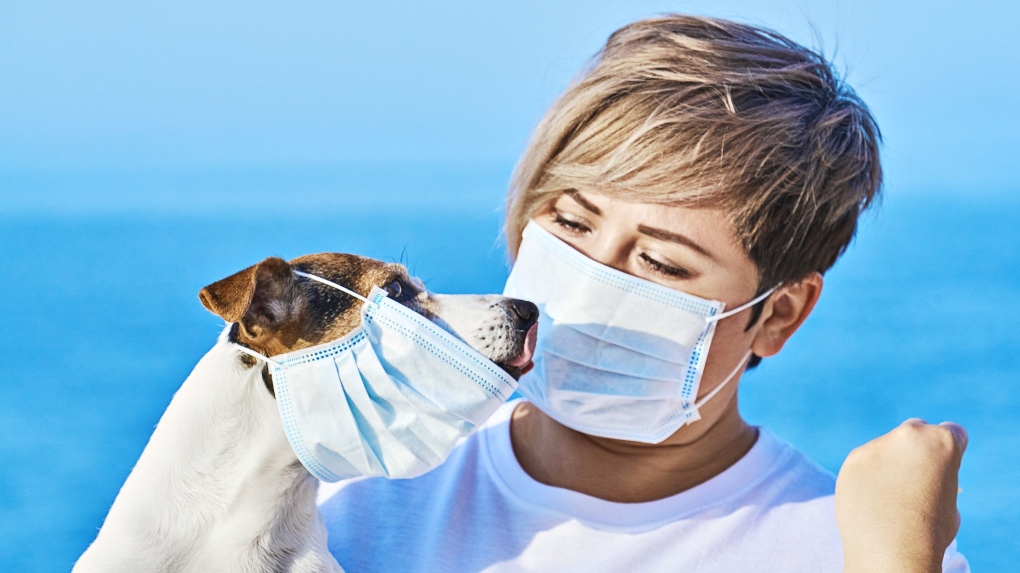In PLV (mechanical ventilation), oxygen - carrying fluids - is dripped through the lungs into the lungs of the patient. In this article I will describe how PL V is used today and how patients who receive it can be cared for. The currently preferred liquids are liquids with oxygen and carbon dioxide bearing properties (e.g. liquid oxygen, liquid carbon monoxide). Perflubron helps to open collapsed alveoli, increase gas exchange and improve lung conformity so that the ventilator can operate at the same level it reaches. This improved conformity allows ventilation with increased tidal volume, resulting in increased gas exchange and PFC fluids in the lungs, which can contribute to improved ventilation and mismatch of the perfusion. ...

Although COVID-19 is thought to originate
from an animal species, the risk of contracting the disease is greater
in humans than in pets. There is no evidence that the virus can be
spread by pets or other animals, but there is currently evidence that at
least some dogs and cats in the US and Europe carry the virus that
causes it. Although recent cases of dogs or cats (including, according
to Otto, a recent case in New York City) have been detected in Europe
and the United States, where there was evidence that animals were
infected by owners with CO VID-19, current epidemiological evidence
suggests that pets may be at risk of infection by humans, he says.
However, according to Otto and his colleagues from the University of
Washington, the risk to humans of harboring the cause is no greater than
that of humans or pets.
A study in China suggests that cats and
ferrets are susceptible to the virus and could transmit it to humans,
but "it is not known for sure, and it is highly unlikely that a cat
would bring a new COVID-19 infection into a home," Otto says. Some cats
are thought to have been infected with the viruses in people who live
with them, he says, although it is not clear if they are viruses.
Other animals were infected with
COVID-19, including 2 cats that were bedridden with confirmed cases, but
no other animals were infected. Despite these reports, pets are at risk
of catching the coronavirus from unsuspecting owners.
The authority recommends pet owners keep
their companions away from interactions with humans and animals in
their homes. Dogs, cats, pigs and cattle are very common with
coronaviruses, but the agency says there is no evidence that pets
transmit COVID-19 to humans.
It comes from a wild animal, probably a
bat from China, and after mutations created a new virus, it developed
the ability to spread efficiently from person to person and develop into
an infected human.
Some dogs and cats living near COVID 19
patients tested positive for the virus. Pets of people infected with CO
VID 19 can also be tested for a virus that causes it, as a tiger did at
New York's Bronx Zoo.
Although there is limited evidence to
support the risk of the virus in pets, animal testing remains
unjustified. As a precaution, it is recommended to keep ferrets and
exotic pets away from people infected with COVID 19. Ferrets are at risk
of becoming infected with a virus that causes human CO VID 19 and
transmits it to humans.
The Centers for Disease Control and
Prevention agree that there is no reason to believe that animals,
including pets in the United States, could be the source of infection
with this new coronavirus. The dogs could simply be the result of a
disease that becomes unhealthy and infects other people or animals. A
veterinarian who specialises in pig viruses at Kansas State University
said: "Dogs have shown weak positive results in animal experiments,
especially in rural areas where farmers' livelihoods may be at stake.
The World Health Organization says it's
always a good idea to wash your hands with soap and water after contact
with a pet. The virus is not yet known, but it seems that it can be
transmitted from animal to animal and even from human to human, in the
same way as other viruses.
A small number of pets, such as cats and
dogs, have been infected with the virus in several countries, including
the United States. If you have a pet, see "How to protect your pet from
possible infection with SARS - CoV-2" for more information. Do you know
if you can contract COVID 19 or the viruses that caused it? We do not
yet know whether animals can be infected, but we do know that they can
be infected by a virus that causes CO VID 19.
The virus is able to hijack cells by
interacting with a cell surface protein called ACE2 in many animals,
including cats and dogs. The first case in the US where an animal
companion tested positive for CO VID 19 marks the first case of
SARS-CoV-2 infection in an animal in the United States. Human-to-animal
transmission of the disease appears to be low and few cases were
reported in the early days of the outbreak. Some more exotic species
such as tigers and lions have also tested positive.
Researchers and authorities are
constantly learning about new coronaviruses, and it seems that they can
spread from one animal to another in the same way as SARS - CoV-2. It is
too early for the COVID-19 infection to spread to humans, but animals,
both domestic and livestock, are likely to play an important role in how
it can spread. We have compiled everything you need to know about
coronaviruses in pets and how they can spread and affect animals.
Cited Sources:
https://vet.osu.edu/about-us/news/covid-19-and-animals
https://www.cdc.gov/coronavirus/2019-ncov/daily-life-coping/animals.html
https://vetmed.illinois.edu/pet_column/coronavirus-pets/
https://vcacanada.com/why-vca-canada/covid-19-faq
https://www.cnet.com/how-to/coronavirus-in-cats-and-dogs-how-does-covid-19-impact-pets/
https://www.tmz.com/2020/04/22/cats-test-positive-coronavirus-covid-19-new-york-pets/
https://www.independent.co.uk/life-style/health-and-families/coronavirus-pet-dog-can-you-catch-it-transmission-a9376926.html
https://medicalxpress.com/news/2020-05-wont-covid-petsbut.html
https://www.cdc.gov/coronavirus/2019-ncov/daily-life-coping/animals.html
https://vetmed.illinois.edu/pet_column/coronavirus-pets/
https://vcacanada.com/why-vca-canada/covid-19-faq
https://www.cnet.com/how-to/coronavirus-in-cats-and-dogs-how-does-covid-19-impact-pets/
https://www.tmz.com/2020/04/22/cats-test-positive-coronavirus-covid-19-new-york-pets/
https://www.independent.co.uk/life-style/health-and-families/coronavirus-pet-dog-can-you-catch-it-transmission-a9376926.html
https://medicalxpress.com/news/2020-05-wont-covid-petsbut.html
Comments
Post a Comment